Working with middle school students can be a blast! It can also be very challenging. I’ve had some of my most meaningful sessions with middle school students, but also my hardest. Middle school is hard…but working with middle school students in speech therapy sessions doesn’t have to be.
The great thing about (most) speech and language goals and sessions is that there isn’t a certain curriculum you have to follow. You likely have the opportunity to be flexible and choose the topics you’re going to cover so long as you can tie in their goals. This allows you to engage with students a little more easily than someone like their social studies teacher can (though I had some pretty great ones).
Continue reading to see five ways to engage middle school speech therapy students and 20+ activities you can use in your speech therapy sessions.
5 Ways to Engage Middle School Speech Therapy Students
1.Get to know your students and their interests
This sounds simple, but taking the time to focus on building rapport with your students can be really helpful for increasing engagement and motivation. By learning about some of their hobbies or interests, you can show them that you have an interest in them, and you can incorporate some of these interests into your session plans.
I have zero to no interest in video games, but many of my middle school students love them. As they mention certain games, I mentally make notes about their names and try to find ways to incorporate them, or video games in general, into sessions. We have read articles about a video game engineer before and played a video game version of Wordle.
This also goes for other hobbies or interests: movies, sports, games, music, and more.
Ask Leading Questions:
It can be hard to even figure out what your students’ interests are, so asking leading questions can be helpful. Instead of asking, “What’s your hobby?,” you can ask Would You Rather…? questions to get some insight into what they like. You may ask, “Would you rather win tickets to a [insert popular local sports team] game or [insert popular band/singer]?,” or “Would you rather join the skateboarding club, Dungeons and Dragons club, or another type of club after school?”
Use AI Systems:
Using ChatGPT or other AI systems can also help create tailored content as well. For example, if you have students who have niche interests, you can use these AI models to create reading passages or questions related to these interests in literally seconds. You could search, “Create a short fiction passage for middle schoolers about the trains in Europe with accompanying comprehension” and voila, you have your content ready for your session!
2.Provide task/activity options
Providing options can help middle schoolers feel a greater sense of control or ownership in what they are doing. There are many ways to provide simple options to increase engagement during their speech therapy sessions.
Topic Options:
If your session activity is related to reading comprehension, try to provide multiple options with different topics. For example, find 2-3 different passages, and ask them which one they would like to read.
Expressive Options:
If you are working on expressive goals, try to provide different options for how they express themselves. If they love drawing, see if they can draw a summary of a story (and then verbally explain what they drew and why 😉). If they like to write poetry, they can try to write a poem using coordinating conjunctions.
Session Options:
If you have two or more different activities you are planning on doing in your session, ask your students which one they would like to do first.
3.Utilize technology
The vast majority of middle school students love technology. Harnessing that preference while incorporating goals is a great way to build engagement in students.
Wordless videos:
Watching wordless videos and animated shorts are some of our favorite ways to target a variety of skills. Check out some of our top videos we like to use during sessions. We also have wordless video companions inside our Open Community (1-pager) and Premium Community (lengthier packets).
In addition to watching and discussing wordless videos, they can be expanded on by:
- Researching real-life connections: Catch It is about meerkats; learn about meerkats and the environment they live in. Pip is about guide dogs; read about what they do in real life.
- Creating your own ending: Come up with an alternative ending or think about what might happen after the video ends.
YouTube:
There is a lot of great educational content on YouTube, though I recommend screening videos ahead of time. Keep scrolling to see some great educational channels. You can also find sports highlight videos on YouTube.
Speech-to-Text:
Use Siri or other speech-to-text instruments to look up information on search engines (e.g., Google) can be used for speech sound generalization. Articulation must be fairly accurate in order for the speech-to-text to display accurate results, which can be motivating for students who are having difficulty with generalization. I have used speech-to-text instruments to look up when movies are coming out to theaters, when the next NBA game is, or when a certain current event (e.g., Daylight Savings) is happening.
4.Play games
Simple games can help increase engagement without taking too much time away from the learning content. For students with articulation goals, they may have to complete X trials before they take their next turn. For language goals that are not always as straightforward, you may take a turn or two in a game after reading or listening to two paragraphs (part of the language target). It may seem simple to you - but it can make a big difference in engagement.
It can also be fun to up the ante with games. For example, the winner of a quick round of Tic Tac Toe may get to choose the reading passage, or the loser of the card game War round has to answer the next question in the question set.
5. Encourage self-reflection
Self-reflection can help students think about their engagement and stay engaged over many sessions. Asking a few simple questions at the beginning and/or end of each session can help students better understand why they are spending their time in the session.
Self-Reflection Questions:
How do you rate today’s session (1-5)?, Why do you rate it that way?, What did you do well today?, What could you improve on next time?, Bonus: goal-specific questions (e.g., What comprehension strategy did you find helpful today?)
These self-reflection sheets (and all of our other resources) are accessible inside our Premium Community.
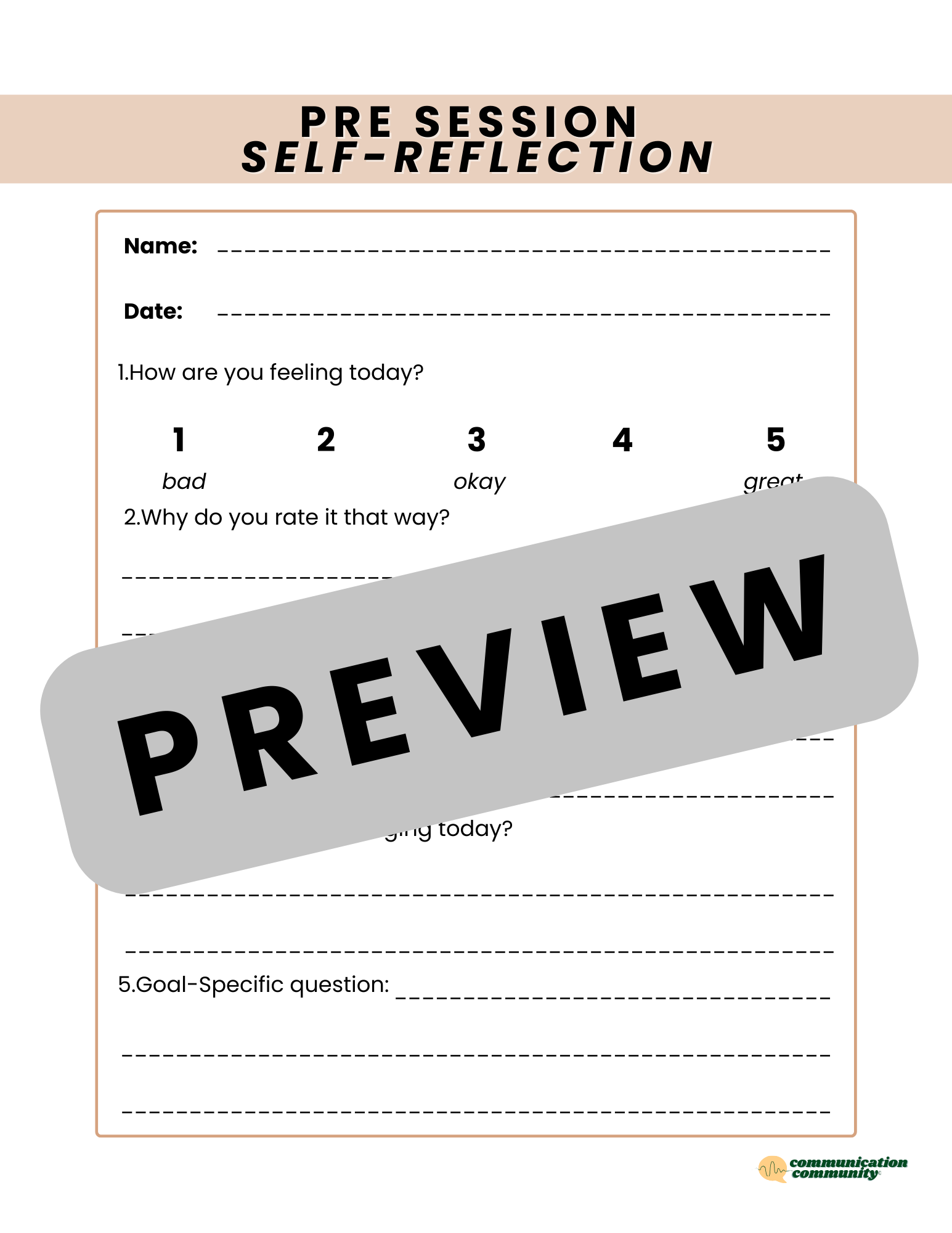
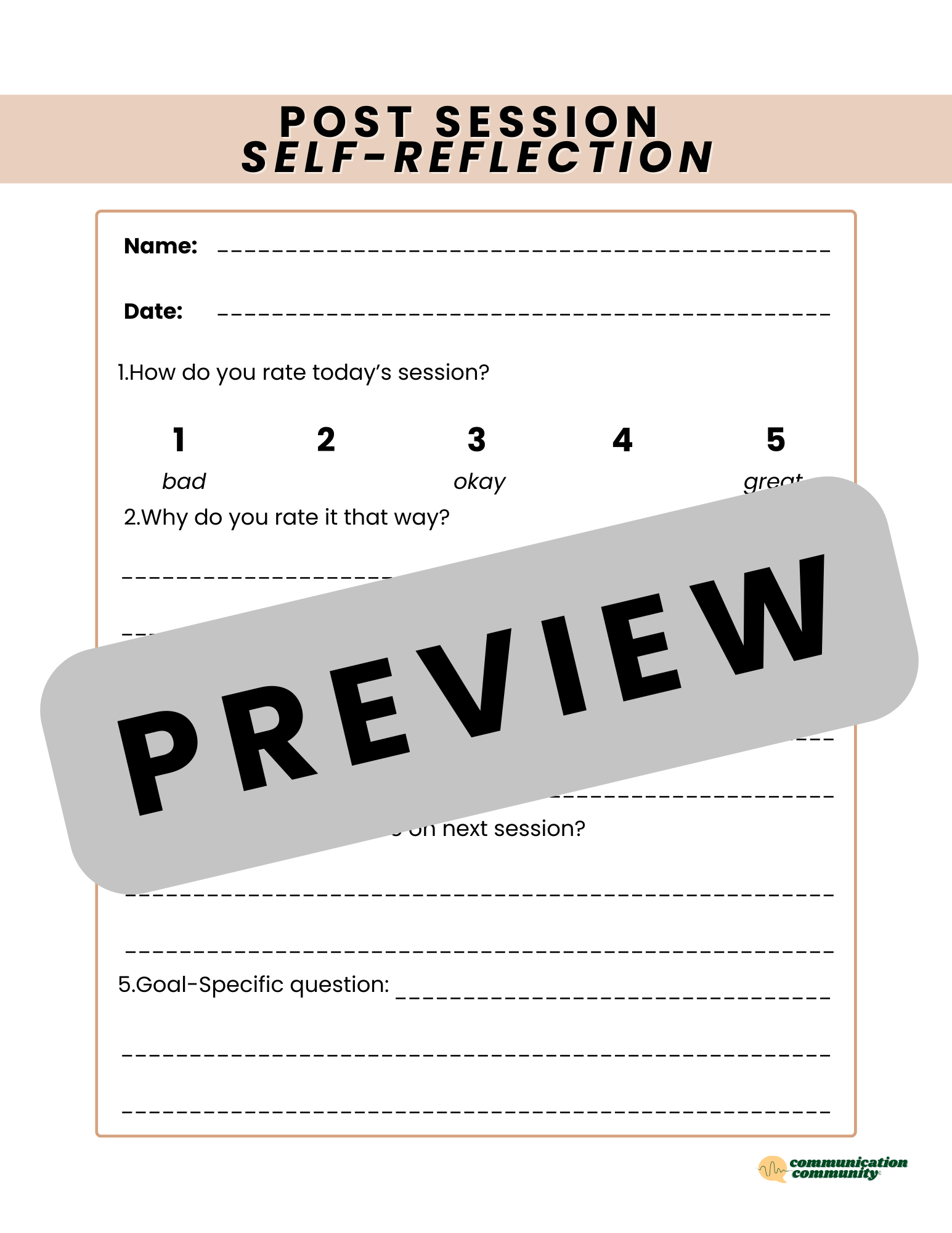
Bonus: Understand your students might just not be “having it” that day
Middle school can be tough. Sometimes, a student is having a rough day due to circumstances beyond your (and their) control. Think back to your middle school experiences: you probably had some rough days, where no matter what happened, you were not going to be super engaged in anything. This is likely going to happen to your students sometimes! Hopefully, it’s not a trend that continues for many weeks, but understanding that it’s common can be helpful if you feel like your sessions just didn’t go well. Using self-reflection tools (as mentioned above) can also provide some insights into students’ emotions and experiences.
20+ Favorite Middle School Speech Therapy Activities
Find over 20 engaging middle school activities, with links when applicable.
Tapping into interests
Articles/Reading Passages: About topics of their interest (e.g., anime, video games)
Facts and Opinions: About topics of their interest (e.g., “Lamar Jackson won the NFL MVP award this year” versus “Patrick Mahomes was robbed of the NFL MVP award this year.”)
Perspective Taking: About current events or special interests (e.g., Pros and cons of starting school at a later time).
Speech-to-Text: Search about preferred topics using accurate articulation
AI Systems: Create reading passages or questions about topics of interest
Playing games
Tic Tac Toe
Card games: War, Go Fish, Crazy 8s, etc.
Dominos: students can get creative and build things, or they can play the standard way and take turns
Reading passages
Note: these are all free but some have paid premium options
Watching YouTube videos
Wordless videos and animated shorts
Student-friendly explanations about holidays or popular events, e.g., St. Patrick’s Day
Asking conversation questions
Would you rather…? Questions: related to hobbies, current events, special interests. Access some inside our Premium Community.
Conversation starters: related to hobbies, current events, special interests
We hope you find new and engaging ways to work with your middle school students!

This post contains some affiliate links and we are (slightly) compensated if you use them, but all opinions are our own. We appreciate the support!

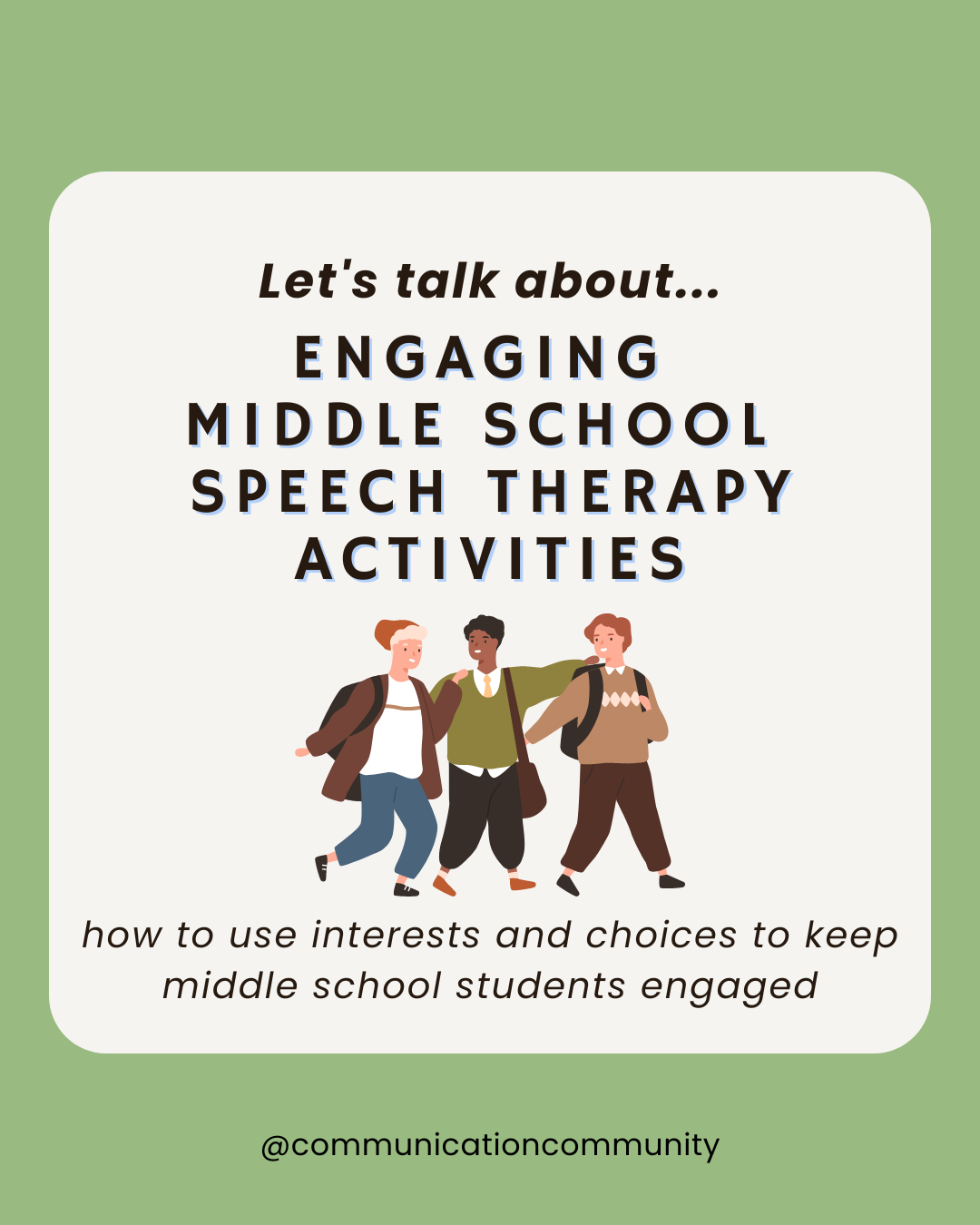
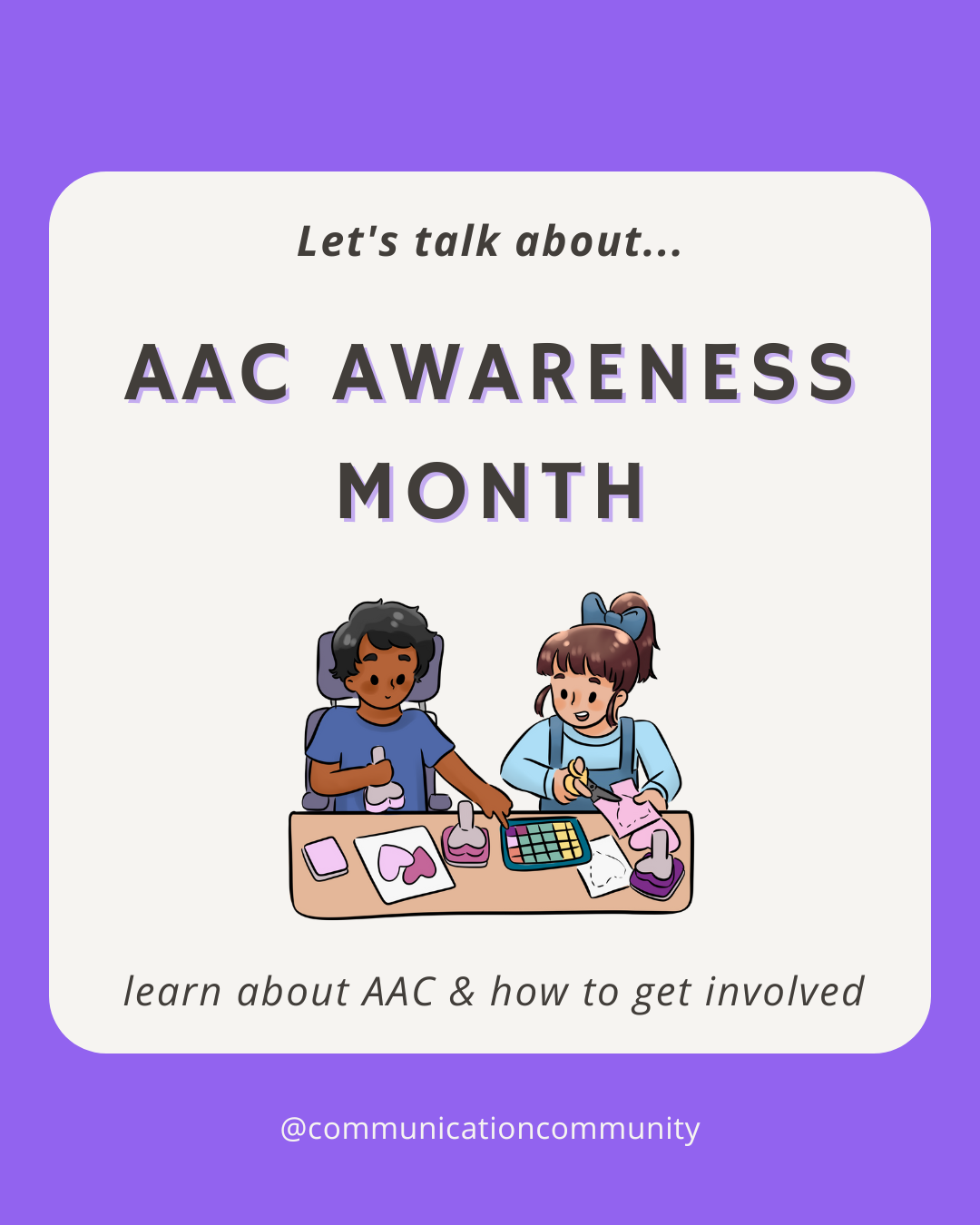
![How to Write Executive Functions Goals [with goal bank]](https://www.communicationcommunity.com/content/images/2024/10/How-to-Write-Executive-Functions-Goals.png)
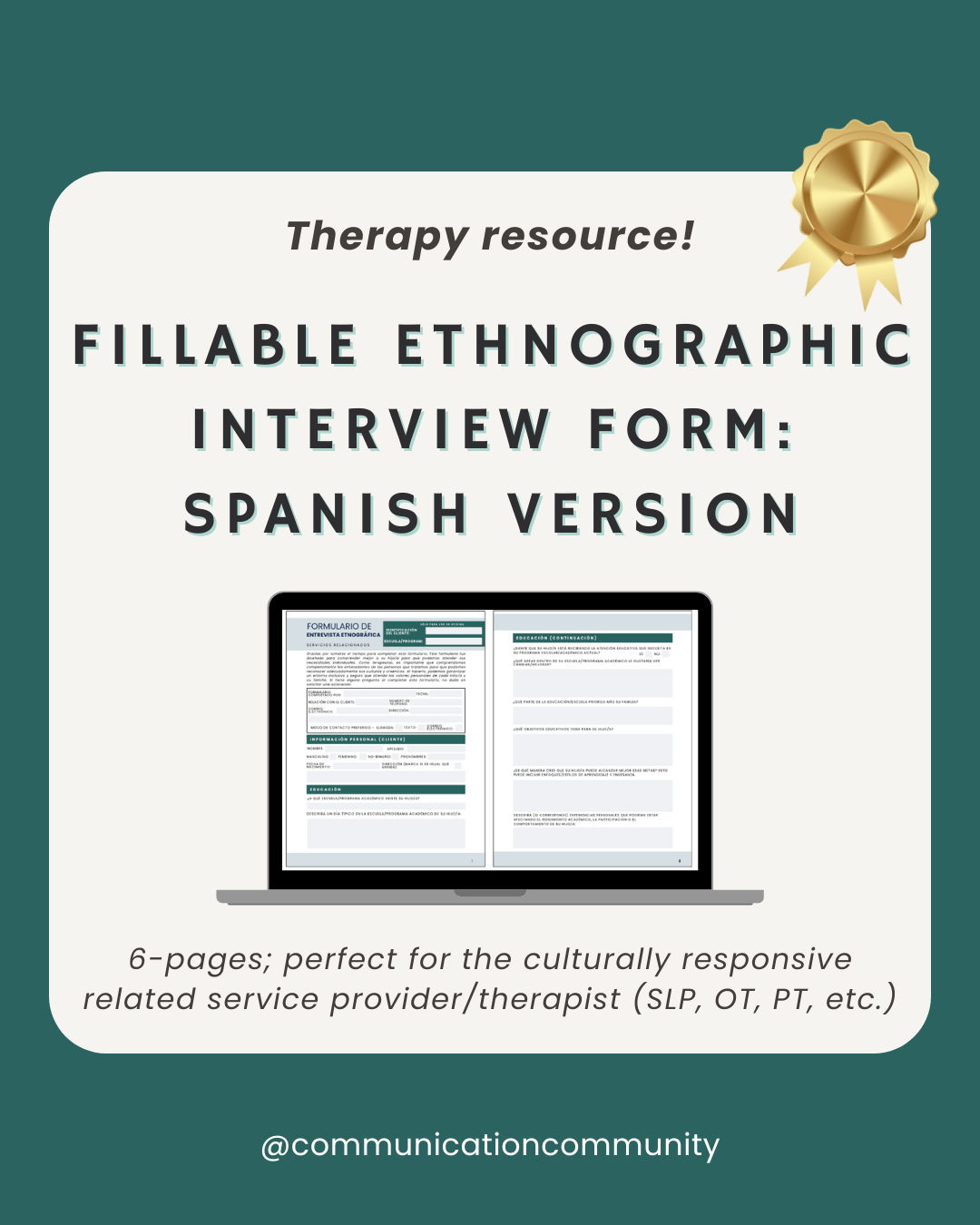
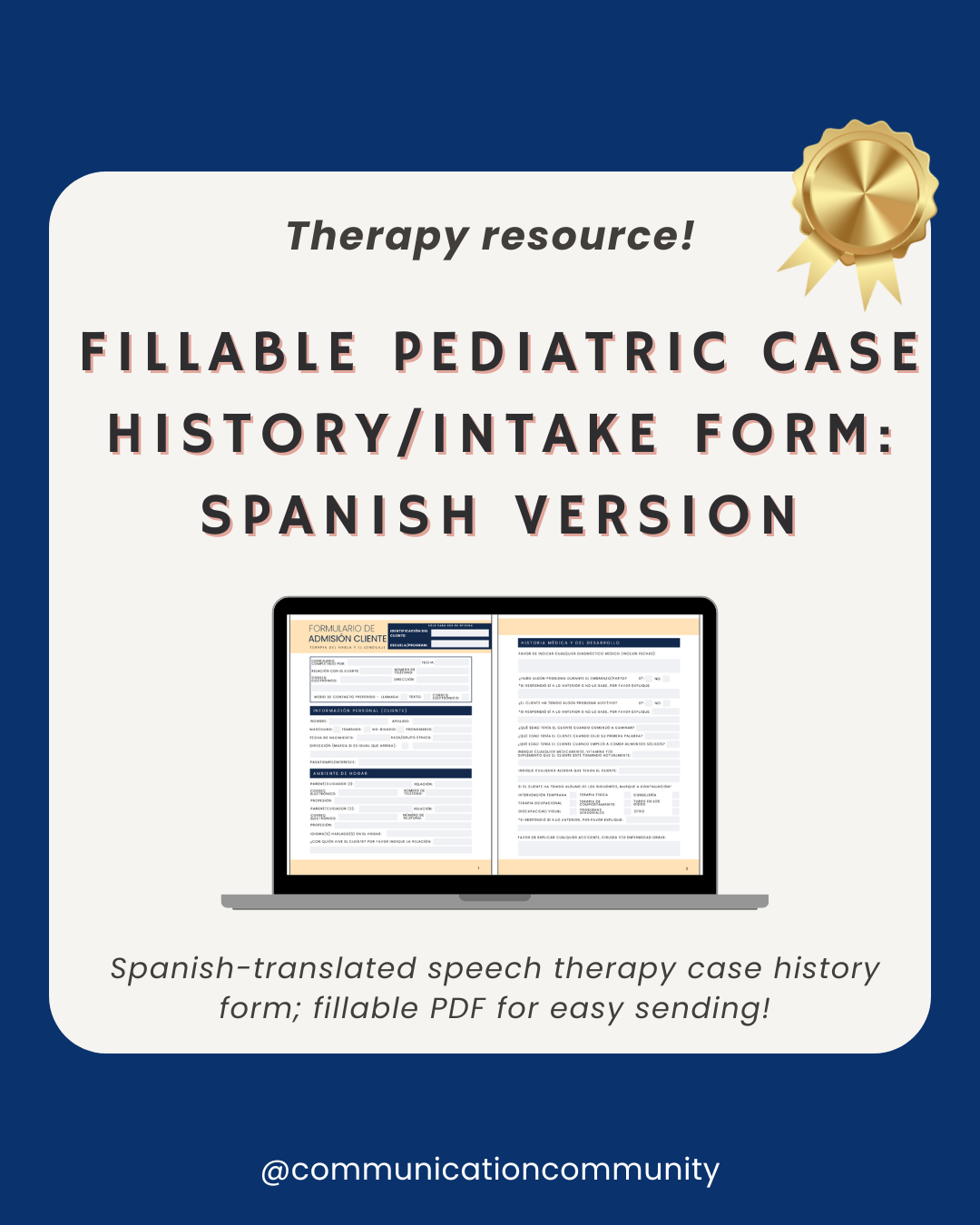
![How to Write Play Skills Goals [with goal bank]](https://www.communicationcommunity.com/content/images/2024/07/Play-Skills-Goals--updated---1-.png)
